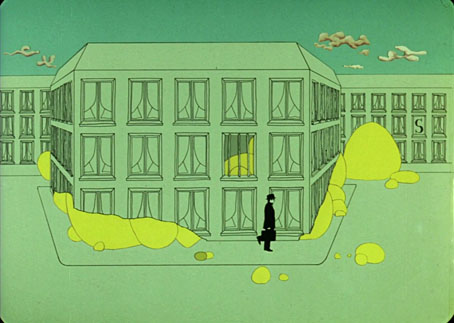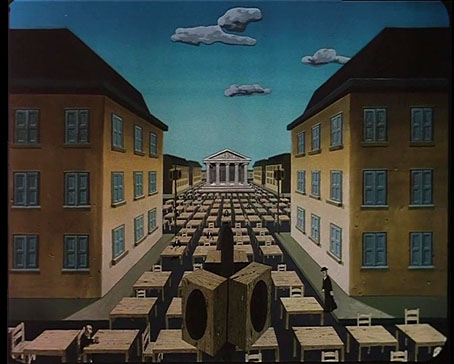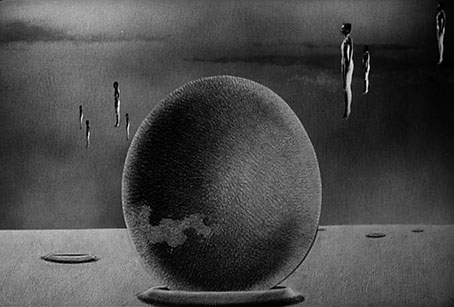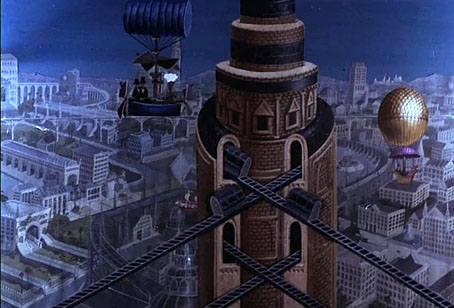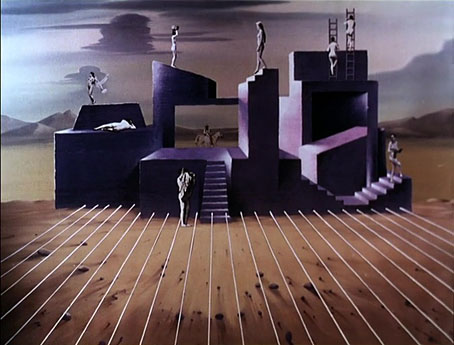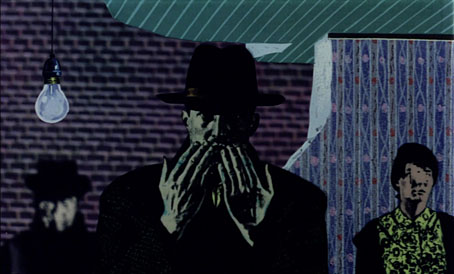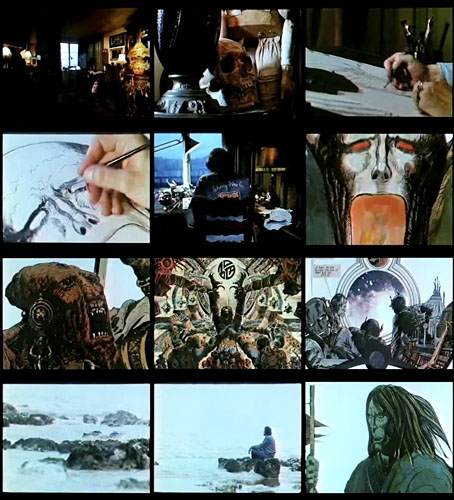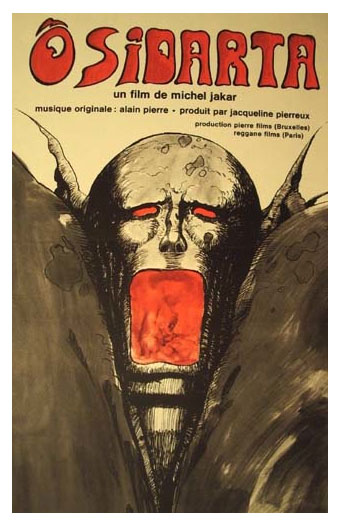Scarabus.
After writing about Gérald Frydman’s animated short Scarabus (1971) last year it’s taken me all this time to get round to watching the other films on his Vimeo channel, most of which are also animations. Scarabus was of interest for its deftly-crafted Surrealism, and there’s more of the same in some of these later films, especially Agulana. As with another Belgian director, Raoul Servais, Frydman directs all his films but doesn’t always animate them himself, hence the variety of art styles.
Agulana (1976) is a kind of sequel to Scarabus with human figures being menaced and oppressed in a transforming environment. The Magritte quotient in films such as this raises the question of whether Magritte-ness (for want of a better term) is a quality unique to René Magritte or a component of the general Belgian character. Jonathan Meades insists on the latter in an excellent film of his own about Belgium.
Alepha (1980) is more Surrealism, which in this case brings to mind the animated films of Piotr Kamler. Naked figures drift over landscapes filled with ambulatory spheres, vast spikes and other structures. Where Kamler favoured electronic soundtracks by Luc Ferrari and Bernard Parmegiani, Frydman has regular collaborator Alain Pierre provide a score of electronic drones.
La Photographie (1983) is the first of two short films set in the 19th century. This one is little more than an anecdote, with a bored family forced to remain motionless while their photograph is taken, a process that lasts for the entire duration of the film. Outside the studio we see a Jules Verne wonderland of new inventions—dirigibles, rapid transport, electric light, typewriters and so on—where the frenetic activity contrasts with the inertia of the photographic process.
Le Cheval de Fer (1984) is another photographic anecdote, this time concerning the wager prompted by an argument about whether a horse’s legs left the ground when it was galloping (and if so, at what point). The argument was famously settled by Eadweard Muybridge who invented a system to photographically record animal locomotion, thus paving the way for cinema, and for film animation.
Les Effaceurs (1991) is Surrealism of a dark and disturbing kind with people urgently trying to scrub away their facial features.
Also on Frydman’s channel is La Sequence Silverstein (2000), a short science-fiction scenario which he wrote but didn’t direct. This one is live action and with dialogue in unsubtitled French. It not bad but I prefer the animations.
Previously on { feuilleton }
• Raoul Servais: Courts-Métrages
• Scarabus, a film by Gérald Frydman
• L’Araignéléphant
• Le labyrinthe and Coeur de secours
• Chronopolis by Piotr Kamler

